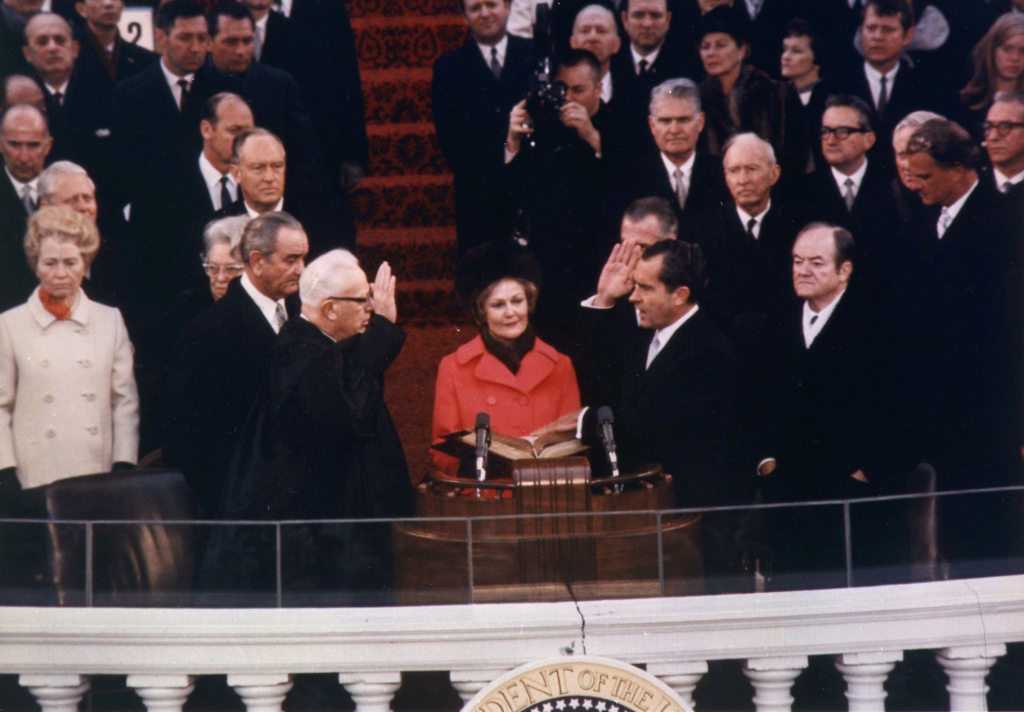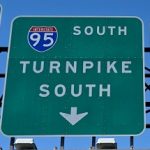Clutching My Precious Inauguration Tickets

Jan. 20, 1969 --- a Monday --- was one of those crisp winter days common to Washington, D.C., squint-inducing bright sunshine pouring down from a blue sky and casting an even greater than usual white brilliance on the U. S. Capitol.
It was a postcard perfect setting for the inauguration of Richard Nixon, the zenith of his long public career and the culmination of perhaps the greatest and most improbable comeback in American political history.
I’d been in Washington a few months shy of three years on the staff of Congressman Peter H. B. Frelinghuysen who represented what was then New Jersey’s Fifth Congressional District, covering Morris and Somerset counties.
Having scored two inaugural ceremony tickets from the allotment awarded to each Congressional office, at noon I stood on the steps of the east front of the Capitol, shoulder to shoulder with my elementary school age son to witness along with tens of thousands of others the uniquely American ritual of the peaceful transfer of the awesome power of government from one person to another, one political party to another.
It was an opportunity --- perhaps the only one --- my son would have to experience what is surely the most compelling example of democracy in its finest hour.
We watched and listened to the invocation by the Rev. Billy Graham, followed by the new president repeating the words of the brief oath of office administered by Chief Justice Earl Warren.
Father and son understood the solemnity of the day, standing in the presence (albeit at a distance) of figures future generations would study in history books.
It was, though, the setting that was so striking, the massive, columned structure topped by a magnificent dome, the resting place of the 19-foot-tall Statue of Freedom, soaring 288 feet above the Capitol Plaza. The building’s center marked the equal division between the two houses of Congress --- the place where issues of war and peace and the well-being of the nation were debated and decisions of enormous moment were reached.
Each day of the four and one-half years I spent on Capitol Hill, my morning commute took me down North Capitol Street and for nearly a mile I could see the Capitol dome. It never failed to impress.
Fifty-two years later, I watched the televised images of that building defiled and desecrated by a howling mob of Americans convinced that a peaceful transfer of power was no longer acceptable, that its goals could only be attained through violence and at gunpoint.
It was a scene that produced an intensity and depth of sadness that one feels at the death of a family member or close friend.
The building where my son and I witnessed history and the one I viewed every working day was under assault, its doors smashed, its corridors overrun by mindless protestors, offices ransacked.
Members of Congress were forced to flee for their lives and take shelter under armed guard. I found myself needing a reminder that the chaos unfolding in front of me wasn’t from some foreign nation where changes in government involved tanks in the streets, out of control fires and deadly battlefield confrontations.
The spectacle of barriers easily breached, hundreds of people climbing fences, scaling the facade, cramming the steps and balconies and spilling into the building’s interior defied rational belief.
It was all accompanied by a cacophony of unintelligible screams and chants and the waving of flags and banners.
They were brought there to vent their anger and dissatisfaction with the outcome of the presidential election and to prevent the Congress from certifying that former vice president Joe Biden had defeated President Donald Trump.
Their rage had been stoked for weeks by Trump’s insistence that the entire electoral process was corrupt and that he was the genuine victor in a landslide only to see victory snatched from him by a shadowy band of unscrupulous manipulators intent on driving him from office.
Once the protestors assembled at the Capitol it was only a matter of time before mob psychology prevailed and --- as always occurs --- the mentality descended to the level of its lowest element rather than to its highest.
The destruction and death that followed was inevitable.
It was a triumph of quintessential cynicism, an affliction infecting those who know the price of everything and the value of nothing. Sadly, President Trump is among that number.
An air of normalcy has thankfully returned. The debris will be collected, the building will be scrubbed inside and out and cleansed of whatever graffiti was left behind.
But, the stain on the nation’s reputation, honor and decency will never fully disappear. Nor will Trump’s.
I still have the admission tickets from that January day in 1969 and my memories of it as a joyous, upbeat celebration of America’s greatness remain strong.
I hope my son’s does as well.
Carl Golden is a senior contributing analyst with the William J. Hughes Center for Public Policy at Stockton University.






Are you kidding? Richard Nixon who can begat the politics of division with the “Southern Strategy” whilst conning the electorate with his non existent plan to end the war in Vietnam? Let’s not forget Watergate, the Enemies List, and the Huston Plan, shall we? Trump is the demon spawn of Nixon. One can no more reform the GOP than the Nazi Party.